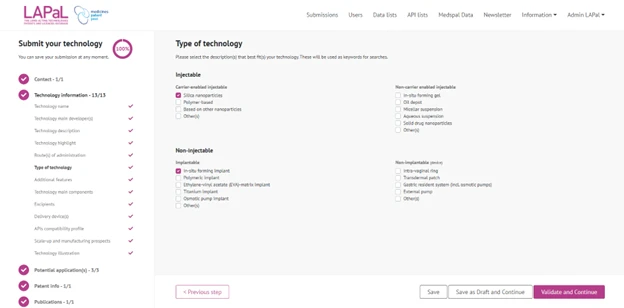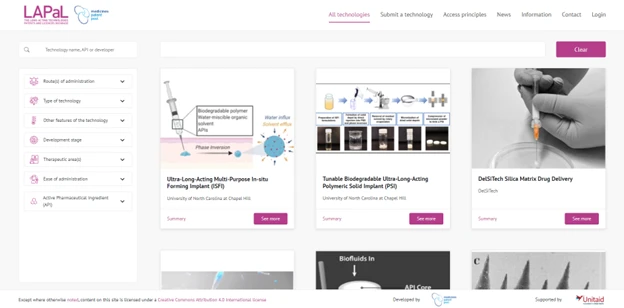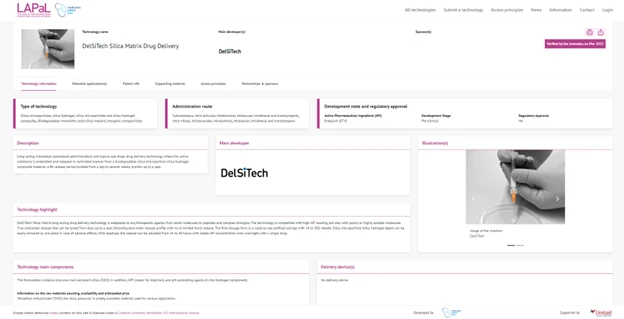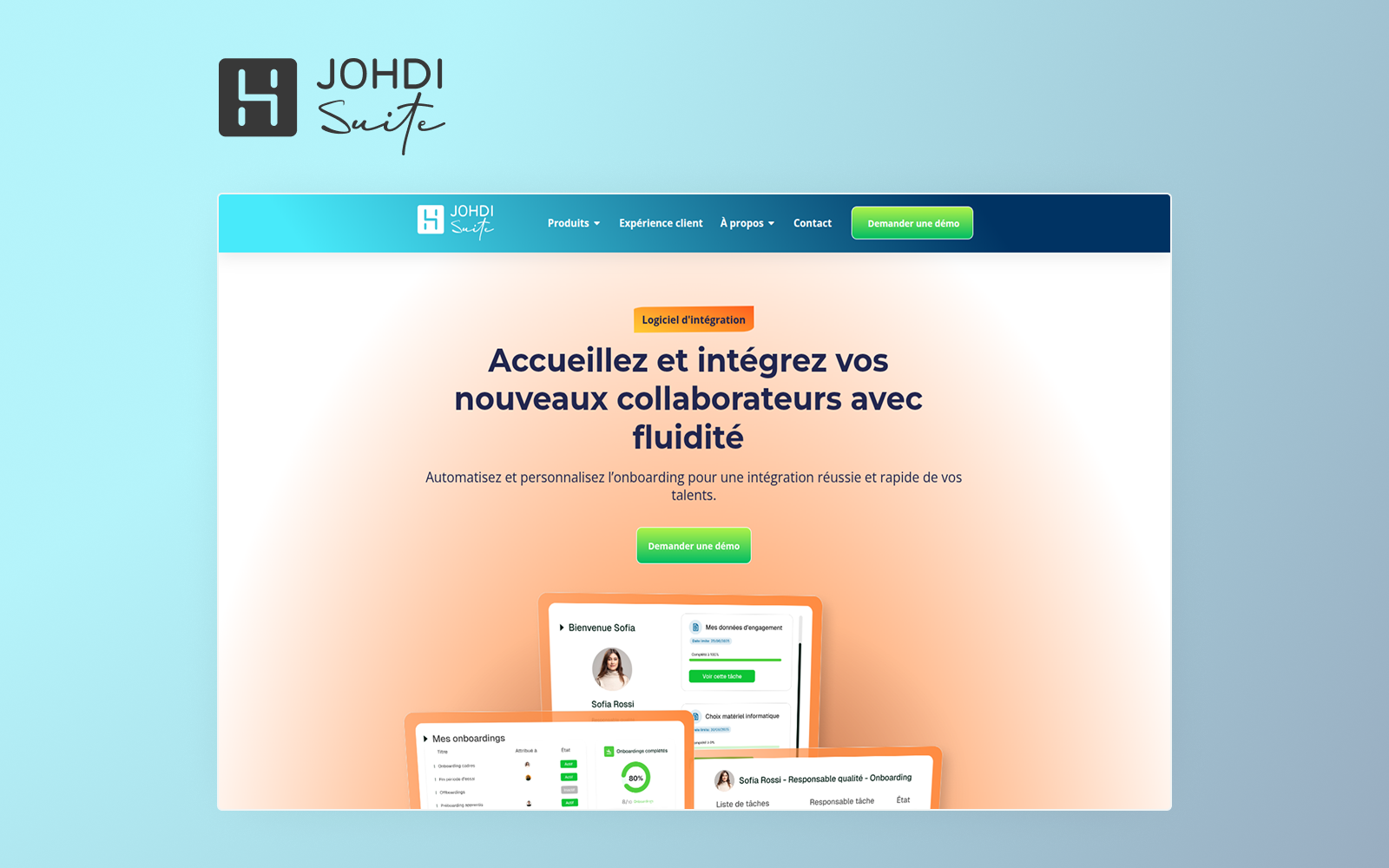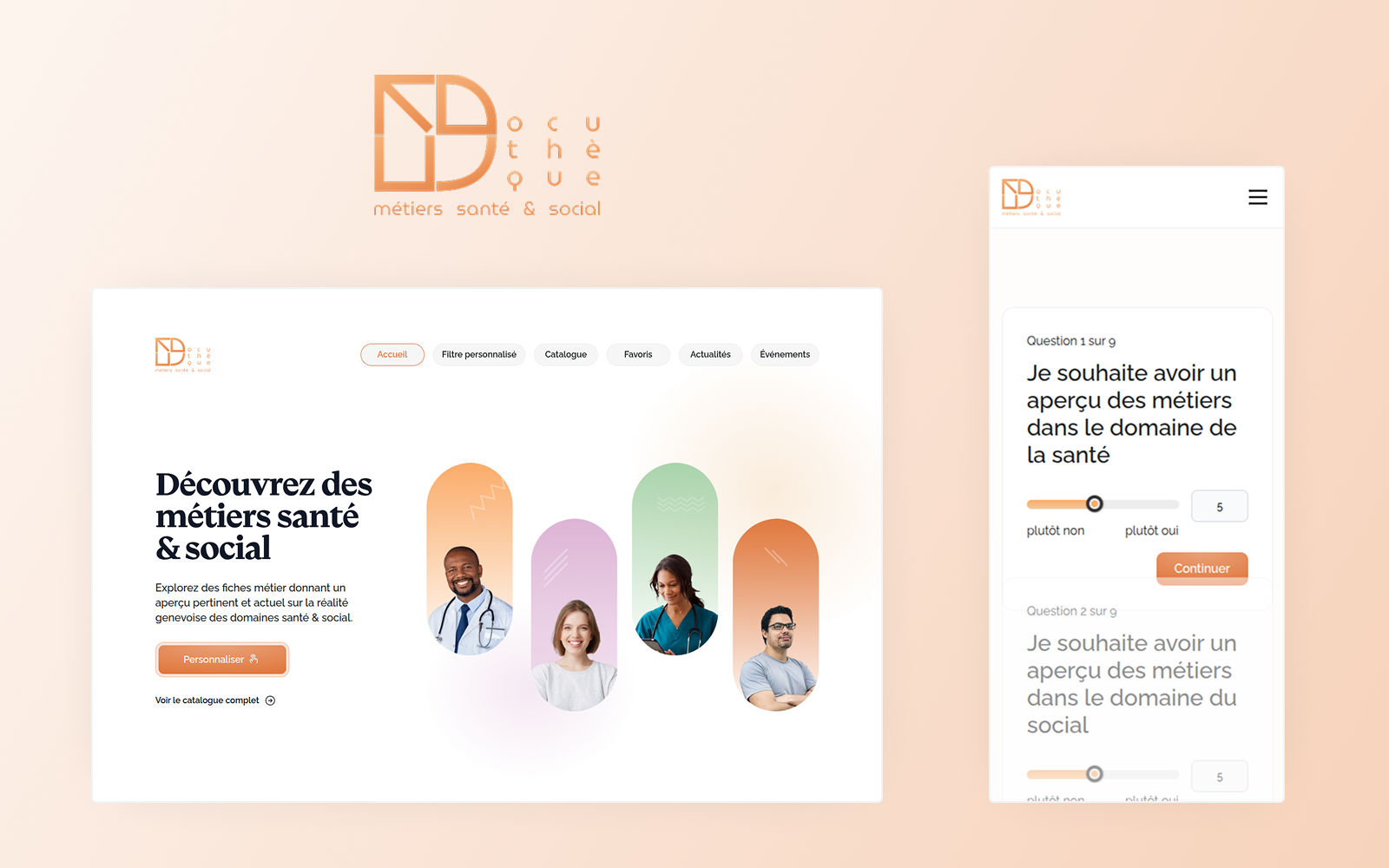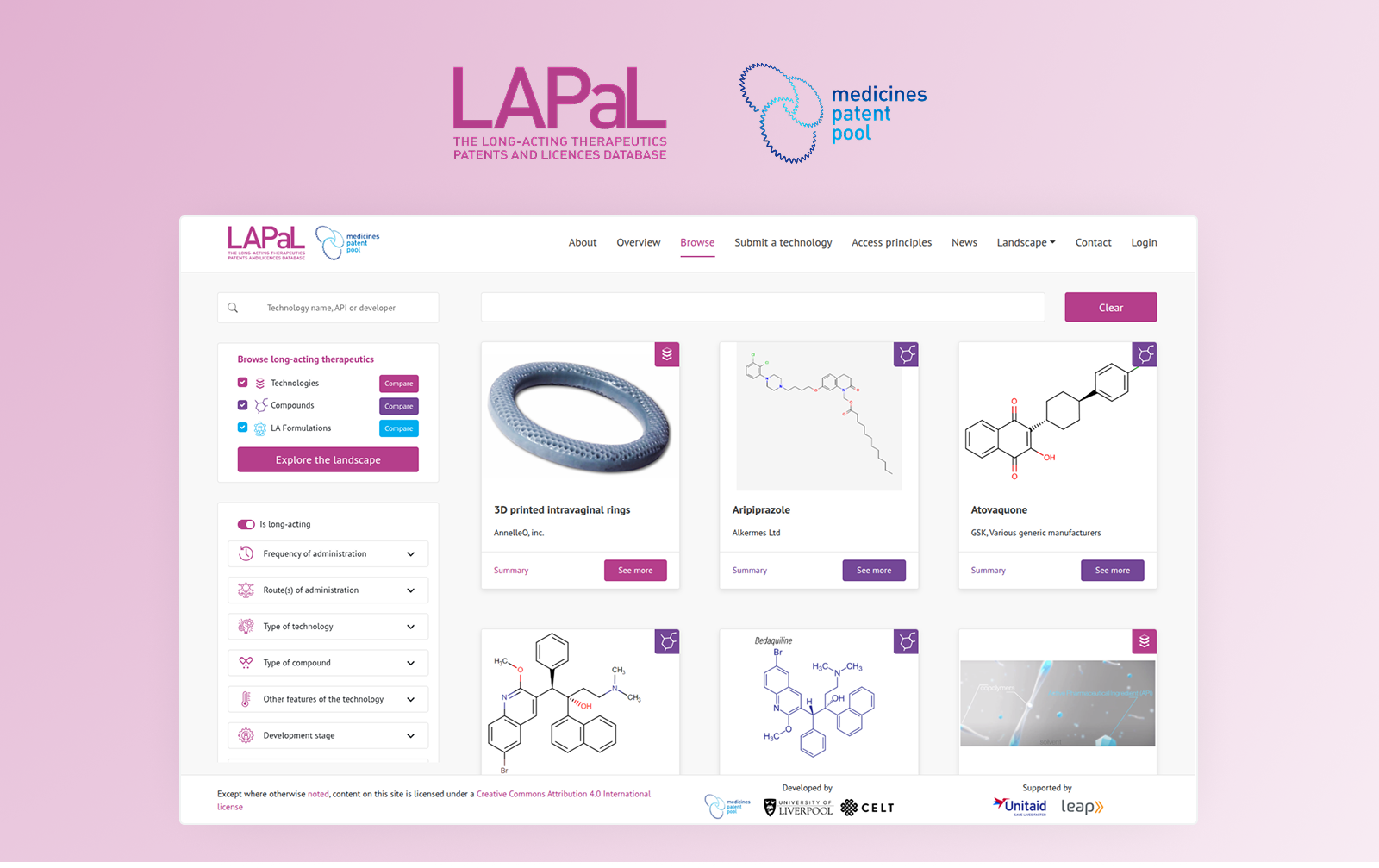
MPP - Lapal
The Medicines Patent Pool (MPP) Foundation is a public health organisation supported by the United Nations, whose mission is to facilitate the development of health solutions and to ease access to them, particularly in low- and middle-income countries. We have been collaborating with the MPP since 2020. We developed an interactive map that you can view here.
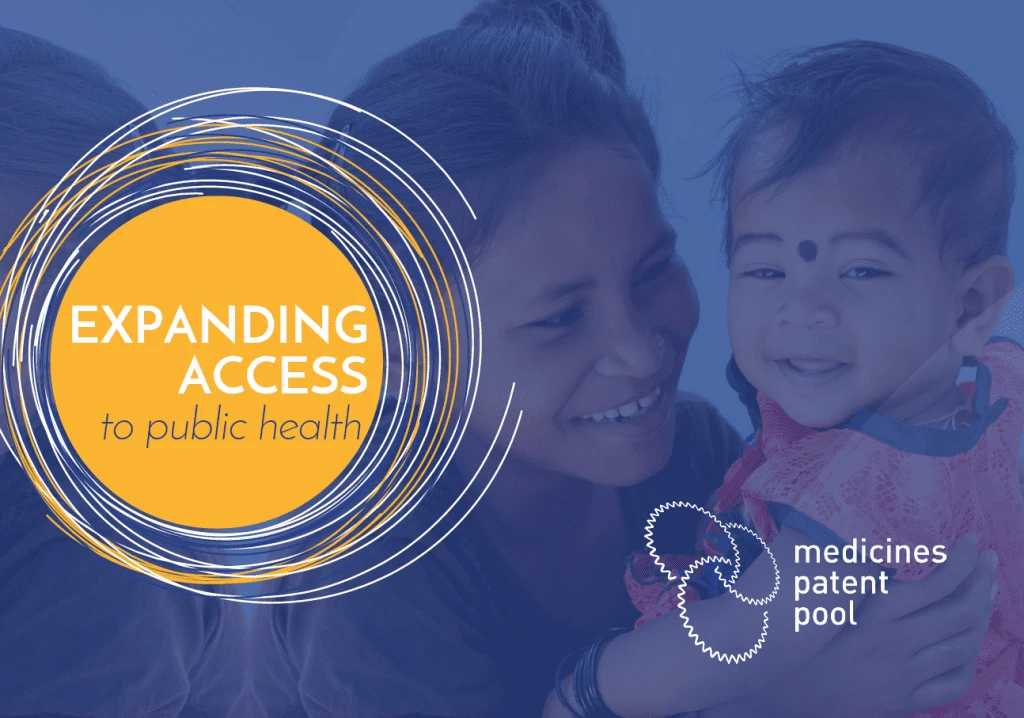
Lapal MPP dashboard
The LAPaL site (Long-Acting Technologies Patents and Licences Database) is a public database concerning long-acting medical technologies, their potential applications, and the intellectual property associated with them.
The site consists of two parts: a public database (accessible free of charge and without registration) and a data entry tool for technology developers (requiring registration).
You can find more details about the objectives of LAPaL, its potential uses, and its complementarity with other freely accessible tools directly on the MPP website here.
Public Database
The public database presents the technologies published in the input tool by the site administrators, generally in collaboration with the developers of the technologies.
Each technology (presented in the form of a sheet) is detailed on a dedicated page containing a wealth of technical information, as well as bibliographic references. Information regarding patents and licences related to the technologies and the associated active ingredients is retrieved from the PaL database, which also underpins MedsPaL, an international reference in the field of information related to the intellectual property of essential medicines in low- and middle-income countries (medspal.org).
In LAPaL, the search area allows users to search by keywords or to sort the technologies according to various criteria. Users can explore the content of the different sheets and export the data in a PDF file.
The site also presents visitors with a set of information regarding this database, as well as information about new developments in the field and the opportunity to subscribe to a periodic newsletter.
Data Entry Tool
This tool is intended for technology developers. It allows (after creating a user account) the entry of information regarding a technology through a step-by-step form. This form enables the input of various descriptions, as well as the categorisation of the technology and the indication of potential fields. The form contains 22 steps to be completed by the user. At any time, the user can save their input as a draft to complete it at a later stage.
After completing the form, the user can submit it for validation. This step is carried out by the database administrator, who can validate (or reject) the information before the technology is published. This stepwise validation is also conducted when updating the information. Indeed, the user can create a new version to be submitted to the administrator without impacting the currently published version.
The data entry tool also has a section dedicated to the administrator. In this section, the administrator can manage all the technologies entered, monitor publication requests, manage static data lists, FAQs, and the information flow (news).
In most cases, the published information is entered by the technology developers themselves. However, it can also be input by the site administrator, who will then invite the technology developer to verify, complete, and validate the information. In this case, a label indicating this compliance is displayed on the said technology.
From a Design Perspective
The technology data entry form contains a large number of steps, some mandatory and others optional. We opted for the use of a module typically designed for implementing an “onboarding” process, thereby allowing for easy management of a flow through different steps, while also enabling the user to interrupt the input and quickly return to the last step completed.
It was also necessary to establish a data architecture conceived to be scalable, whether at the level of elements coming from lists (dynamically managed in the administrator section) or in the possibility of adding new data fields in future versions.
From a Technical Perspective
The project was developed using the PHP Laravel framework and the Vue.js framework.
And what's next?
The Lapal site is publicly available. Nine technologies have already been published. Future developments are already planned for soon.
